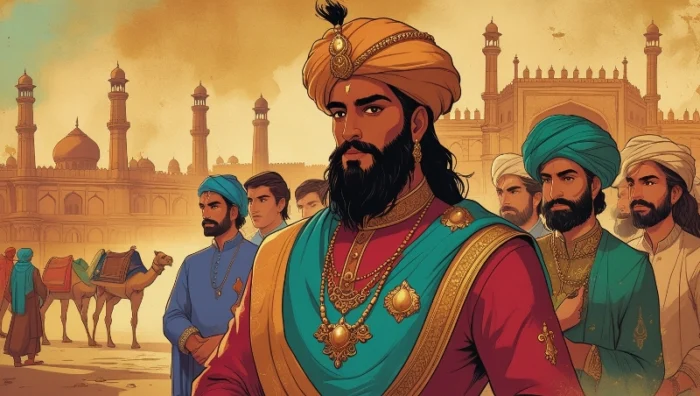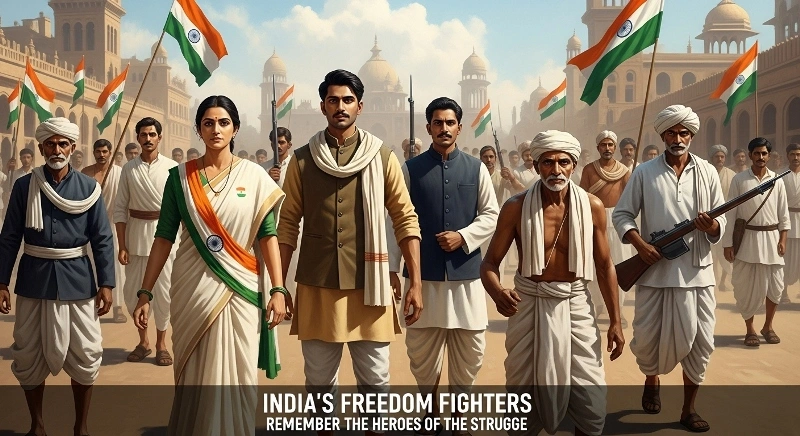The Delhi Sultanate (1206–1526 CE) was a pivotal period in Indian history, characterized by significant political, social, cultural, and religious changes. Established by the Turkic rulers, the Sultanate marked the rise of Muslim rule in India and set the stage for the eventual establishment of the Mughal Empire. This era saw a series of military conquests, the consolidation of power in Delhi, and the eventual establishment of a dominant political entity in northern India. It was a time of great conflict, as well as profound cultural exchanges between indigenous traditions and foreign influences.

In this article, we explore the historical significance of the Delhi Sultanate, its major rulers, key events, and the impact of this period on India’s development.
Table of Contents
1. The Rise of the Delhi Sultanate
The Delhi Sultanate came into existence after the Muslim conquest of northern India, initiated by Muhammad Ghori in the late 12th century. Ghori’s invasion of the Ghurid Empire led to the establishment of Muslim rule, and his victory at the Second Battle of Tarain (1192 CE) set the foundation for the rise of the Sultanate.
Muhammad Ghori and the Beginning of Muslim Rule: Muhammad Ghori’s conquest marked the first major Muslim influence in northern India, though it was his slave general Qutbuddin Aibak who formally laid the foundation for the Delhi Sultanate.
Establishment of the Slave Dynasty: Aibak became the first Sultan of Delhi in 1206 CE, starting the Slave Dynasty—a series of rulers who were of Turkic, Afghan, and Central Asian origins.
2. The Sultanate Dynasties
Over its threecenturylong existence, the Delhi Sultanate was ruled by several dynasties, each with distinct contributions to Indian history and culture. The most notable of these dynasties include:
The Slave Dynasty (1206–1290 CE): The first ruling dynasty, led by Aibak and his successors, Iltutmish and Raziya Sultana, saw the consolidation of the Sultanate’s power. It was during the reign of Iltutmish that the Sultanate gained stability and expanded its territories.
The Khilji Dynasty (1290–1320 CE): Founded by JalaludDin Khilji, this dynasty is known for its military conquests, economic reforms, and the rise of Alauddin Khilji, one of the most powerful rulers of the Sultanate. Alauddin’s reign was marked by territorial expansion and the introduction of administrative and economic reforms.
The Tughlaq Dynasty (1320–1414 CE): Founded by GhiyasudDin Tughlaq, this dynasty witnessed significant political and economic changes. The most notable ruler, Muhammad bin Tughlaq, is remembered for his ambitious but often failed projects, such as the introduction of a new currency and the shifting of the capital from Delhi to Daulatabad.
The Sayyid Dynasty (1414–1451 CE) and The Lodi Dynasty (1451–1526 CE): These later dynasties were less powerful, and their rule eventually weakened, leading to the downfall of the Sultanate and the rise of the Mughal Empire under Babur in 1526 CE.
3. Key Features of the Delhi Sultanate
A. Political and Administrative Reforms
The rulers of the Delhi Sultanate introduced numerous administrative reforms that shaped the governance of medieval India. These included the centralization of power, the establishment of a bureaucratic system, and the introduction of new tax systems.
Feudal System: The Sultanate rulers relied on a feudal system, granting land to nobles and military officers in exchange for loyalty and military service.
Revenue System: The Delhi Sultans introduced an organized tax system, including the Zakat tax (a religious tax for Muslims) and land revenue collection methods.
B. The Role of Military Conquests
The Delhi Sultanate is known for its aggressive military expansion, which involved continuous warfare and the conquest of several regions in northern India. The military campaigns of rulers like Alauddin Khilji and Muhammad bin Tughlaq played a significant role in expanding the Sultanate’s boundaries.
Alauddin Khilji’s Conquests: Alauddin Khilji’s military campaigns brought large parts of southern India under the Sultanate’s control, making it one of the most powerful empires of its time.
Muhammad bin Tughlaq’s Campaigns: Muhammad bin Tughlaq is remembered for his campaigns in the Deccan Plateau and his efforts to extend Sultanate control over regions like Vijayanagar.
C. Cultural and Architectural Contributions
The Delhi Sultanate was a period of significant cultural and architectural development, as well as the blending of indigenous and Islamic traditions. This led to the creation of a distinct IndoIslamic culture.
Architecture: The period saw the construction of iconic structures like the Qutub Minar in Delhi, the Alai Darwaza, and the Jama Masjid. The fusion of Islamic and Indian architectural styles led to the creation of unique structures that are considered masterpieces of IndoIslamic architecture.
Art and Literature: The Sultans of Delhi patronized scholars, poets, and artists. The period saw the development of Persian as the court language, and the production of numerous Persian texts, historical chronicles, and religious treatises. Sufism also flourished during this time, with several Sufi saints gaining prominence.
4. Religious and Social Impact
One of the most significant aspects of the Delhi Sultanate was the introduction of Islam to India and the complex interactions between Hinduism and Islam. The period saw both religious tolerance and conflict, as the Sultanate rulers were Muslim, but the majority of the population remained Hindu.
Spread of Islam: The Delhi Sultanate facilitated the spread of Islam in northern India, with a growing number of conversions, particularly among the lower castes and those living in rural areas.
Religious Tolerance and Intolerance: While some Sultans like Alauddin Khilji were tolerant of Hindu practices, others, such as Mahmud of Ghazni and Muhammad bin Tughlaq, carried out violent campaigns against temples and religious sites.
Sufism and Bhakti Movements: The interaction between Sufism and Bhakti movements contributed to a spiritual syncretism, with saints and poets from both traditions influencing the masses.
5. Decline of the Delhi Sultanate
By the 15th century, the Delhi Sultanate faced numerous challenges, including internal conflict, economic difficulties, and the rise of powerful regional kingdoms.
The final blow to the Sultanate came in 1526 CE when the Sultan Ibrahim Lodi was defeated by Babur at the Battle of Panipat, marking the end of the Delhi Sultanate and the beginning of the Mughal Empire.
6. Legacy of the Delhi Sultanate
The Delhi Sultanate left a deep and lasting legacy on India, influencing its politics, culture, architecture, and religious life.
Political and Administrative Legacy: The centralized administration and military organization established during the Sultanate period influenced later Indian rulers, especially the Mughals.
Cultural Impact: The fusion of Indian and Islamic cultures during the Sultanate period laid the foundation for the flourishing of IndoIslamic art, literature, and architecture.
Religious Influence: The spread of Islam and the growth of Sufi traditions during the Sultanate period had a lasting impact on India’s religious landscape.
Conclusion
The Delhi Sultanate was a period of profound change and conflict in Indian history. It marked the beginning of Muslim rule in India and laid the foundation for the subsequent rise of the Mughal Empire.
While the Sultanate faced significant challenges and witnessed both religious tolerance and intolerance, its cultural contributions and political innovations had a lasting impact on the Indian subcontinent. The period remains crucial in understanding the evolution of India’s diverse and rich cultural and religious heritage.
Frequently Asked Questions (FAQs)
What was the Delhi Sultanate?
The Delhi Sultanate was a series of Muslim dynasties that ruled over northern India from 1206 to 1526 CE, marking the introduction of Islamic rule in India.
Who founded the Delhi Sultanate?
The Delhi Sultanate was founded by Qutbuddin Aibak in 1206 CE, after he became the first Sultan of Delhi following the defeat of the Nanda Dynasty.
Which were the major dynasties of the Delhi Sultanate?
The major dynasties of the Delhi Sultanate included the Slave Dynasty, Khilji Dynasty, Tughlaq Dynasty, Sayyid Dynasty, and the Lodi Dynasty.
What were the key achievements of Alauddin Khilji?
Alauddin Khilji is known for expanding the Sultanate’s territory, implementing economic reforms, and strengthening the administration. He also conducted military campaigns in the Deccan.
How did the Delhi Sultanate contribute to Indian culture?
The Delhi Sultanate influenced Indian culture through architecture, the introduction of Islam, and the promotion of IndoIslamic art. Notable structures include the Qutub Minar and Alai Darwaza.
What was the role of Sufism during the Delhi Sultanate?
Sufism played a significant role in spreading Islamic ideas, with Sufi saints contributing to the religious and social life of India, fostering tolerance and spirituality.
Why did the Delhi Sultanate decline?
The Delhi Sultanate declined due to internal strife, weak leadership, economic difficulties, and the rise of regional kingdoms. The final collapse came with the Battle of Panipat in 1526.
How did the Sultanate influence Indian politics?
The Sultanate introduced a centralized administration, military organization, and taxation systems that influenced later Indian rulers, including the Mughals.
What was the relationship between Hindus and Muslims during the Delhi Sultanate?
The period saw a mix of religious tolerance and intolerance. While some rulers were tolerant, others destroyed Hindu temples and imposed higher taxes on Hindus.
What is the legacy of the Delhi Sultanate?
The Delhi Sultanate left a legacy of IndoIslamic culture, architectural wonders, and significant political and social changes, laying the foundation for the subsequent Mughal rule.






